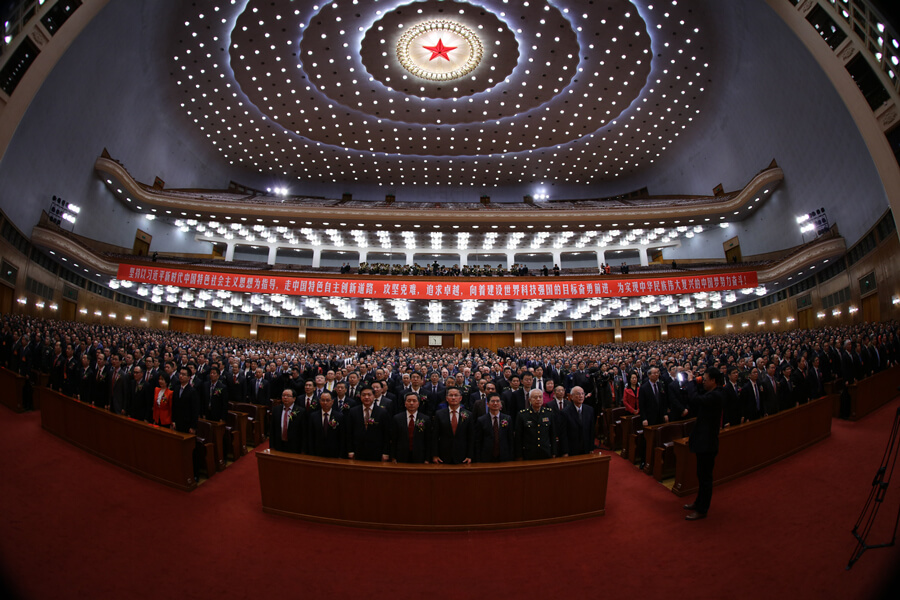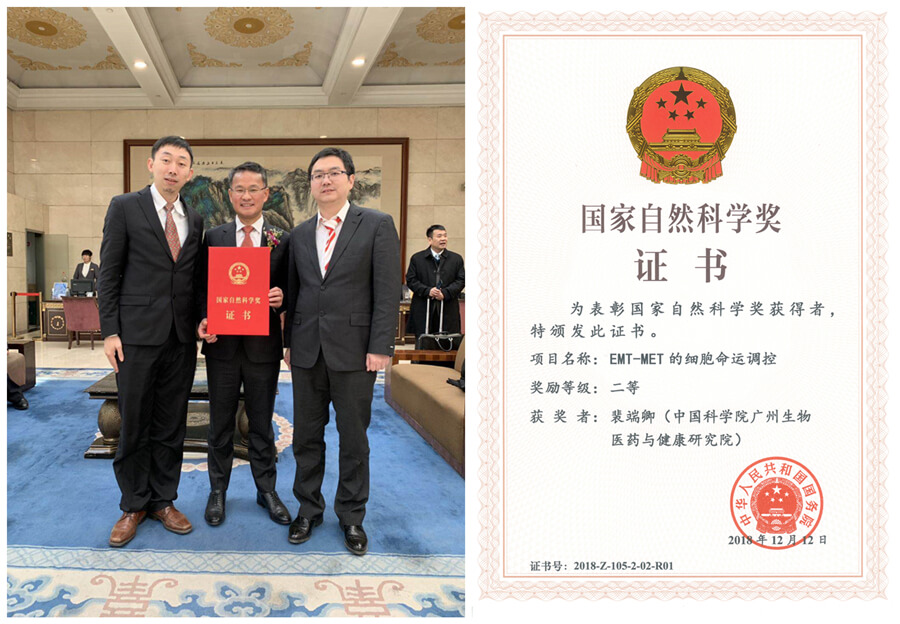Pei Duanqing Won Second Prize of State Natural Science Award 2018


The National Science and Technology Awards Conference was held in Beijing on the morning of January 8, 2018. The project of "EMT-MET for cell fate regulation" by Researcher Pei Duanqing, Pan Guangjin, Chen Jiekai, Zheng Hui and Wang Tao, won the second prize of the State Natural Science Award.
Supported by the strategic science and technology pilot projects of the Chinese Academy of Sciences special for "stem cell and regenerative medicine research”, the team led by Pei applied the discovered cell fate switching rules to technical practice on the models of somatic cell reprogramming, stem cell differentiation and cell transdifferentiation, and obtained the following results: 1) revealing that MET is the initial mechanism of somatic cell reprogramming, and optimizing the MET theory to the EMET theory based on the key role of EMT/MET coupling; 2) discovering various epigenetic modifications that regulate cell fate switching by affecting MET; 3) using the EMET theory proposed by the team to guide the establishment of new technology systems for somatic cell reprogramming, stem cell differentiation and cell transdifferentiation.
The project published 8 representative papers in series on Cell, Nature and other journals, cited 1237 times excluding self-citations on SCI, including dozens of direct references in Cell, Nature and Science magazines by well-known scientists in the field such as Nobel Prize winner Shinya Yamanaka. One of the results was selected as “Top Ten Science and Technology News 2010”; one stem cell paper was selected as a cover article by Cell; and three papers were supported by special features on magazines. The project results have been widely recognized by the circle of natural sciences home and abroad, for their great scientific value that lays solid foundations for basic and applied research of stem cells and regenerative medicine.
As the supporting unit of the GIBH CAS was once again honored in the field of stem cell research after winning the second prize of State Natural Science Award in 2013.
Attachment Download: